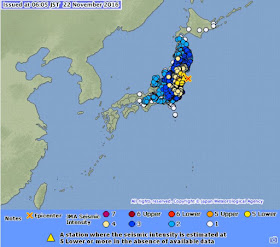USA:
Mississippi River could leave farmland stranded
Mississippi River could leave farmland stranded
If the Mississippi River continues to go unchecked, the farmland on Dogtooth Bend peninsula may be only accessible by boat. According to a University of Illinois study, each successive flood carves a deeper channel across the narrow neck of the peninsula. This floodwater shortcut threatens to permanently reroute the Mississippi River, leaving Dogtooth Bend an island rather than a peninsula. Repeatedly repairing the levee breaches, building a bridge over the shortcut created by the flooding, or letting the Mississippi chart its own course are some solutions to the problem.
Netherlands:
New Dutch drama, ‘if the levees breach’: http://www.npo.nl/series/artikelen/als-de-dijken-breken
Website visualizing floods in the Netherlands: http://www.overstroomik.nl/
Cadzand-Beach most closely resembles
Omaha Beach (Dutch) For the
first time enormous Xblocs, an innovation of construction consortium BAM, are
applied in the Netherlands. They must protect the hinterland from so-called
super storms that may arise from a combination of sea level rise and climate
change. The probability of such a super storm is 1 percent in a hundred years.
That seems low, but without proper protection the flood damages can amount to
more than one hundred billion euro. The three-dimensional shapes can be linked
to each other similar to Lego-blocks, so that the connection of the resulting dam
becomes extra strong. But by the openness persisting between the Xblocs, the
barrier absorbs the enormous power of the super waves instead of being averted.
The slender palisades also reduces the required material. A ‘small’ Xbloc
consists of 1.5 cubic meters of concrete, a large one of 4 cubic meters. That
is only one-third of the material which would be required for massive concrete
blocks of the same size. "The gaps between the Xblocs creates space for
all kinds of marine life. Small micro-organisms can settle here, but also fish
and crabs find shelter. We considered mixing the concrete with shell grit, so
that a large surface would be created with better adherence, but that was really
too expensive." Research at Rijkswaterstaat in 2003 showed that the force
with which the waves hit the shore is greater than previously thought. At nine
locations along the Dutch coast dunes or dikes had to be reinforced to be able
to withstand a superstorm. When Minister Schultz van Haegen (Infrastructure and
Environment) formally closed the work in Cadzand today, all the weak links will
have been restored.

